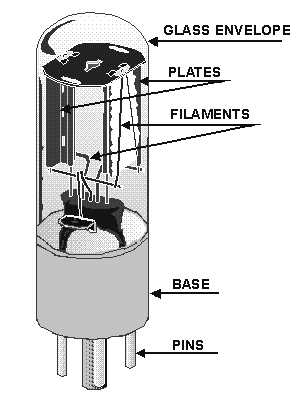1-11
Figure 1-9.—Diode construction.
The base must be mechanically strong and made of an insulating material to prevent the tube
elements from shorting.
Because they require relatively frequent replacement, most tubes are designed to plug into sockets
permanently mounted in the equipment. Tube pins and sockets are so designed that tubes cannot be
plugged in incorrectly.
Tube sockets must make secure mechanical and electrical contact with tube pins, must insulate pins
from each other, and must provide terminals to which circuit components and conductors are connected.
Each element of a tube is connected to a pin in its base. To trace a circuit easily and efficiently, you
must match elements with their pin numbers. This information is available in tube manuals and
equipment schematics. Figure 1-10 shows these numbers on one example of a diode symbol. You will
also note the designation V1 beside the tube. Electron tubes are often identified in schematic diagrams by
the letter V and a number.

